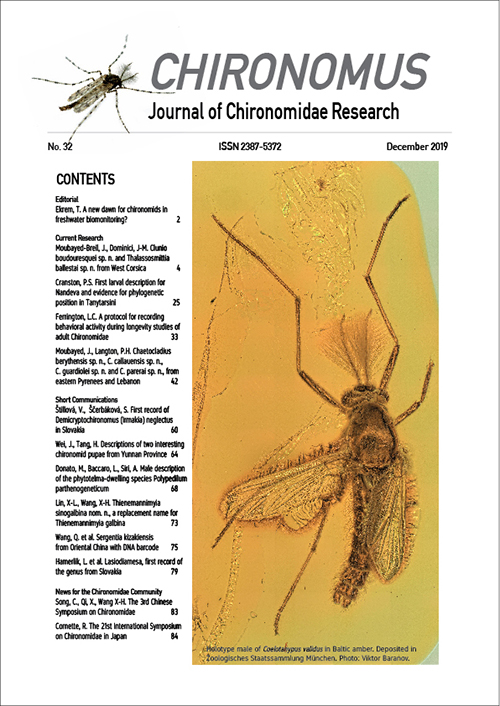An enigmatic Chironomidae (Diptera): first larval description for Nandeva Wiedenbrug, Reiss and Fittkau and evidence for phylogenetic position in Tanytarsini
Main Article Content
Abstract
The previously unknown larva of the genus Nandeva Wiedenbrug, Reiss and Fittkau (Chironomidae: Chironominae) is suggested to be a candidate from tropical northern Australia belonging to the tribe Tanytarsini. The basis for the assumption is DNA analysis showing maximum values of Bayesian posterior probability and Bootstrap support for an exclusive sister relationship of the unreared larva with a male of Nandeva from South America. The monophyly of Nandeva has high support as a member of the subtribe Tanytarsina, although its precise relationships within this subtribe lack support. Larval morphology is described and illustrated, and conforms to the subtribe Tanytarsina in tribe Tanytarsini. The historical tempo is discussed in relation to fossils and dating of pertinent nodes and the term ‘pseudo-gondwanan’ is used to described an extant restricted austral range, but with fossils showing a wider past distribution in the north.
Downloads
Article Details
Authors who publish with this Open Access journal agree to the following terms:
- Authors retain copyright and grant the journal right of first publication with the work simultaneously licensed under a Creative Commons Attribution License 4.0 that allows others to share the work with an acknowledgement of the work's authorship and initial publication in this journal.
- Authors are able to enter into separate, additional contractual arrangements for the non-exclusive distribution of the journal's published version of the work (e.g., post it to an institutional repository or publish it in a book), with an acknowledgement of its initial publication in this journal.
- Authors are permitted and encouraged to post their work online (e.g., in institutional repositories or on their website) prior to and during the submission process, as it can lead to productive exchanges, as well as earlier and greater citation of published work (See The Effect of Open Access).
